Your ultimate guide to Turkish tea culture
Stepping into the world of Turkish tea is like entering a realm where history, tradition, and daily life blend seamlessly. Turkish tea, or “çay,” is not merely a drink; it’s an emblem of the country’s rich cultural tapestry.
Whether in the heart of Istanbul’s bustling streets or the serene landscapes of the Black Sea coast, the ritual of brewing and savoring tea is a cherished practice that connects people and traditions across generations.
In Turkey, tea is synonymous with hospitality. The offer of a steaming, tulip-shaped glass of tea is a gesture of friendship and warmth, a customary part of welcoming guests into homes and engaging in leisurely conversations in teahouses.
This guide explores the multifaceted culture of Turkish tea, delving into its varieties, the unique utensils used, the ceremonial aspects, and the authentic methods of preparation.
Through this journey, you’ll uncover how this simple yet profound beverage embodies the spirit of Turkey, providing a window into its rich heritage and the daily lives of its people.
What is Turkish Tea?
Turkish tea, or “çay” (pronounced chai), is more than just a beverage in Turkey—it’s a symbol of hospitality, a staple of daily life, and a significant part of the country’s cultural fabric. Unlike the coffee for which Turkey is historically famous, tea has become the preferred drink for most Turks, consumed throughout the day in small tulip-shaped glasses.


Tom, Lead Clinic
Researcher and Writer
Hi there! My name is Tom and I’ve been living in Turkey for almost a decade. Besides advocating the medical tourism industry in Turkey I also love to share my travel tips for Turkey. I know all the hidden gems and best ways to enjoy Turkey.
While you’re here – did you know that almost 60% of all hair transplants each year happen in Turkey?
Learn all about getting a hair transplant in Turkey including female hair transplants on my dedicated pages.
Turkish tea is typically brewed strong and served hot, often sweetened with sugar, but never with milk. This drink is an integral part of social interactions, served to guests in homes, offices, and at social gatherings.
Types of Turkish Tea
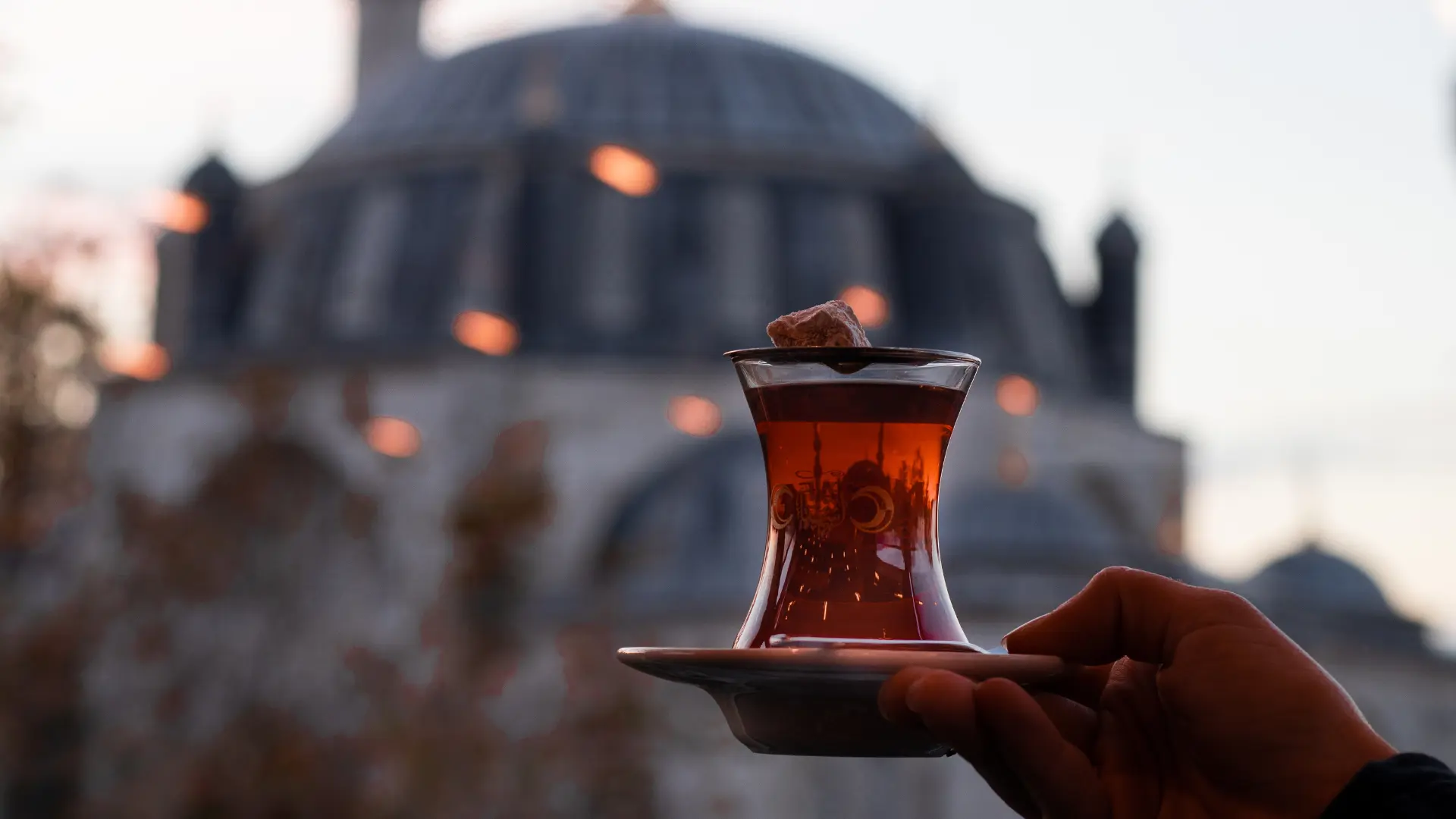
Turkish tea mainly falls into two broad categories: traditional black tea and herbal teas. The most commonly consumed is black tea, known for its robust flavor and deep red color. Grown predominantly in the Rize province along the Black Sea coast, this tea has a distinct taste and aroma.
In addition to black tea, Turkey also offers a variety of herbal teas, known as “bitki çayları.” These herbal infusions are made from a range of flowers, leaves, and fruits, offering diverse flavors and potential health benefits.
Popular herbal teas include linden flower (ıhlamur), sage (adaçayı), rosehip (kuşburnu), and chamomile (papatya). These teas are often consumed for their soothing and medicinal properties.
Tea Culture in Turkey
Tea is a cornerstone of Turkish culture, transcending social classes and age groups. It is a common sight to see people of all walks of life enjoying tea at any time of the day. Tea houses, or “çay bahçesi,” are ubiquitous in Turkey. These establishments, ranging from simple roadside stalls to elaborate cafes, are places where people gather to relax, converse, and enjoy a cup of tea.
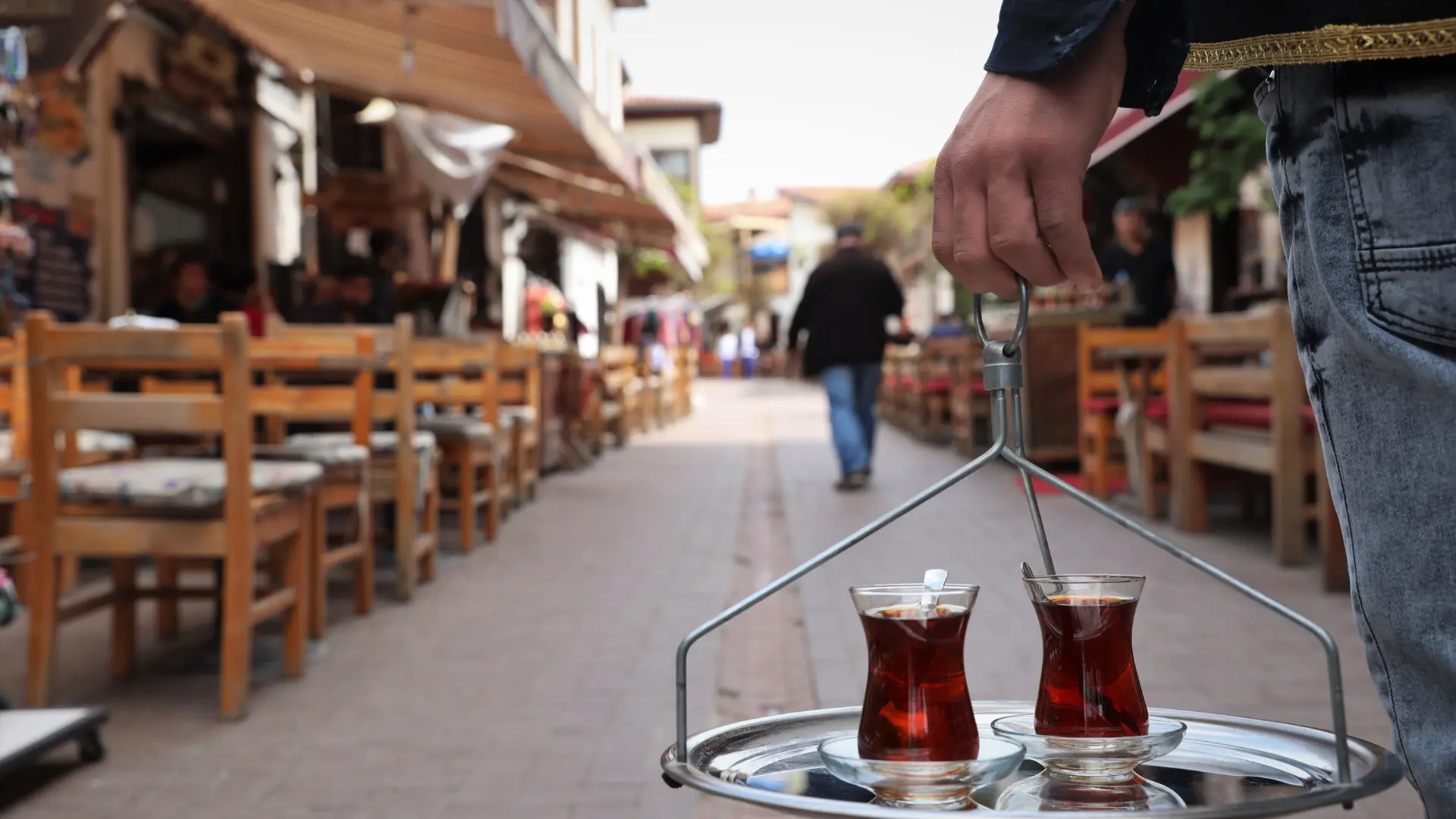
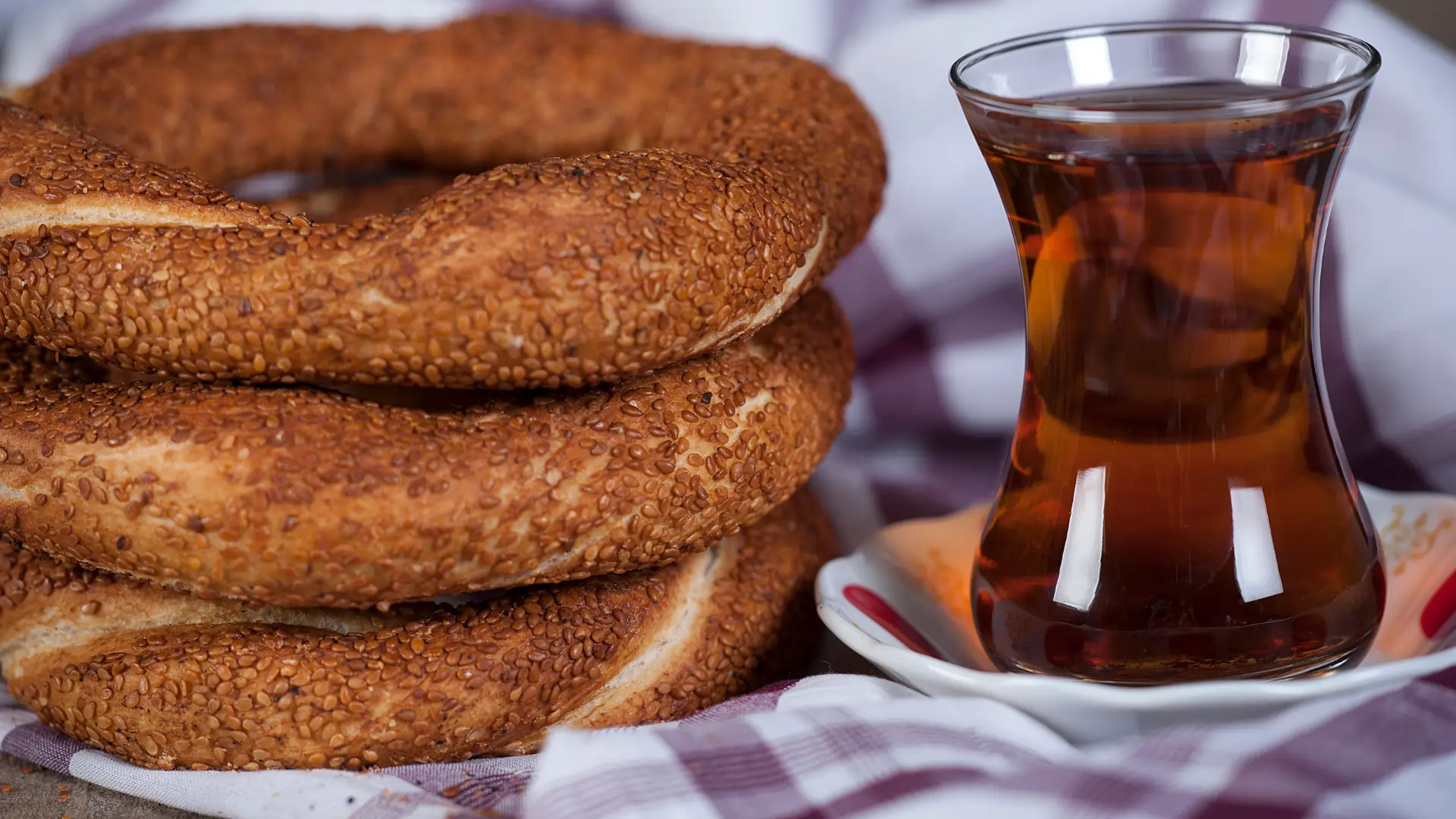
The tradition of offering tea to guests is deeply rooted in Turkish hospitality. Serving tea to visitors is a sign of respect and friendliness. Refusing a cup of tea when offered is considered impolite unless one has a good reason.
Tea is also integral to Turkish business culture. Business meetings often start with a round of tea, setting a relaxed and amiable tone for discussions. The ubiquitous nature of tea in Turkish life illustrates its role as a social lubricant and a symbol of community.
Tea Pots and Tea Glass Used in Turkey
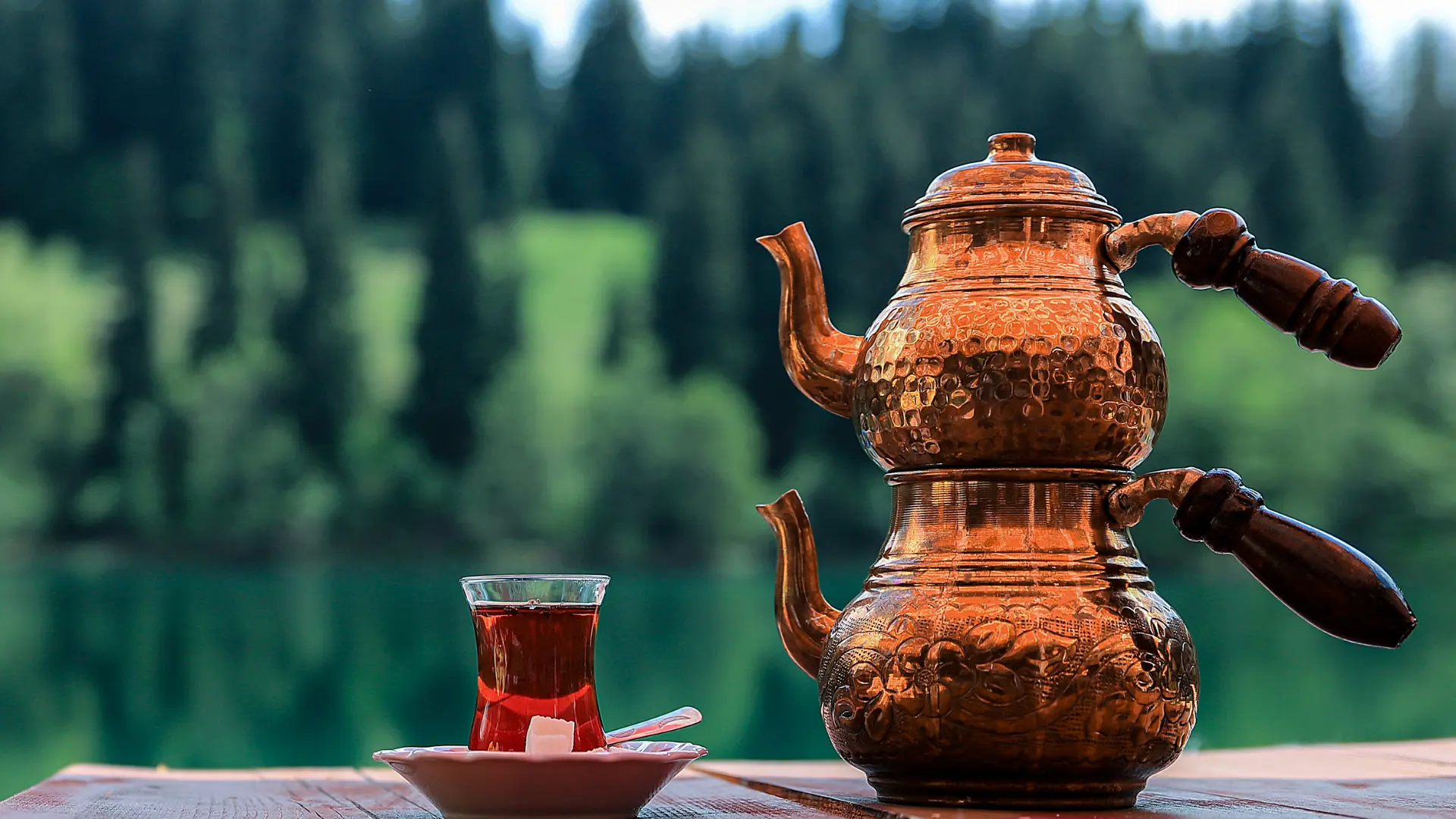
The preparation and presentation of Turkish tea are as significant as the tea itself. A unique two-tiered teapot called a “çaydanlık” is used to brew the tea. The çaydanlık consists of two stacked kettles: the lower, larger kettle holds boiling water, while the upper, smaller one contains a concentrated tea brew. This design allows for the tea to be kept hot without becoming too strong or bitter.
Tea is served in distinctive tulip-shaped glasses known as “ince belli,” meaning thin-waisted. These small, transparent glasses are designed to enhance the tea-drinking experience. The shape allows the tea to be enjoyed visually, as the deep red color of the tea is part of its appeal. The glasses are small, encouraging frequent refills and prolonged social interaction.
Top Rated Hair Transplant Clinics in Istanbul
Turkish Tea Ceremonies
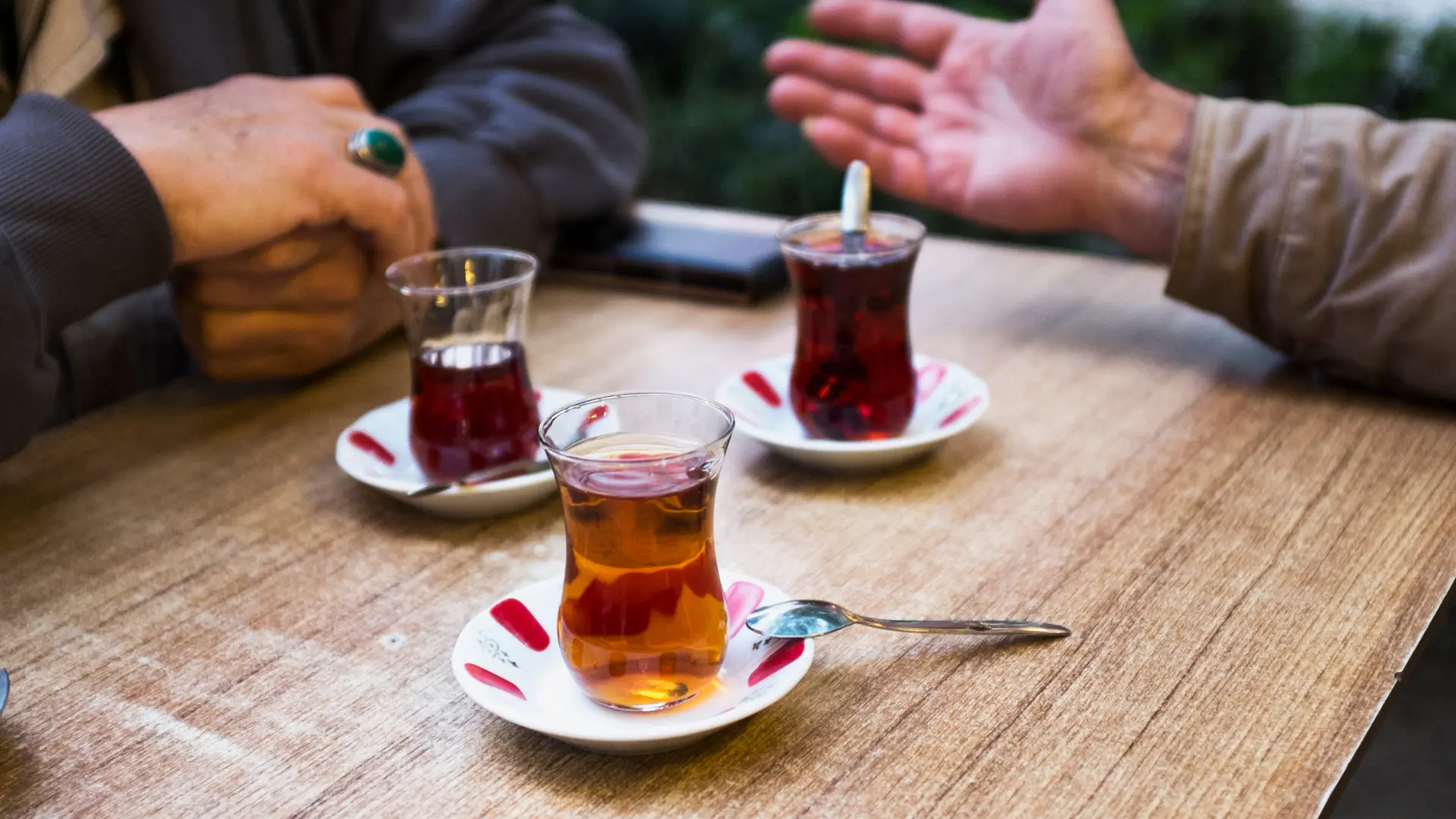
Though not as formalized as Japanese tea ceremonies, Turkish tea ceremonies hold a special place in the culture. The process of brewing and serving tea is seen as an art form. The host takes pride in preparing the perfect cup of tea, balancing the strength of the brew with the right amount of hot water and sugar to suit the guests’ preferences.
During traditional gatherings, tea is often served on a tray with a teapot, glasses, and a bowl of sugar cubes. The host pours the tea with a flourish, often from a height to create a frothy layer on the surface of the tea. Guests typically enjoy their tea slowly, engaging in conversation and enjoying the communal experience.
Special occasions, such as weddings and holidays, may feature more elaborate tea ceremonies. These events highlight the importance of tea in Turkish celebrations and its role in bringing people together.
Understanding Hair Loss
Before you can truly commit to a hair transplant it is important to understand hair loss. Together with the experts at IdealofMeD, we wrote an e-book explaining everything you need to know about hair loss. From hair loss causes to practical tips on how to deal with hair loss and the best hair loss products.

How to Make Authentic Turkish Tea
Making authentic Turkish tea is a meticulous process that requires attention to detail. Here’s a step-by-step guide to brewing the perfect cup of Turkish tea:
- Ingredients:
- Quality Turkish black tea leaves
- Fresh water
- Equipment:
- A çaydanlık (two-tiered teapot)
- Tulip-shaped tea glasses
- Sugar cubes (optional)
- Instructions:
- Fill the lower kettle of the çaydanlık with water and bring it to a boil.
- Once the water is boiling, pour a small amount into the upper kettle to warm it, then add the tea leaves (approximately one tablespoon per person).
- Fill the upper kettle with boiling water from the lower kettle and place it back on top.
- Reduce the heat to low and let the tea brew for about 10-15 minutes. The lower kettle should continue to gently simmer.
- Pour the brewed tea into glasses, filling each glass about a third of the way. Then top up with hot water from the lower kettle to achieve the desired strength.
- Add sugar to taste, but never milk.
The result is a perfectly balanced, aromatic tea that reflects the rich heritage of Turkish tea culture.
A Sweet Taste of Turkey
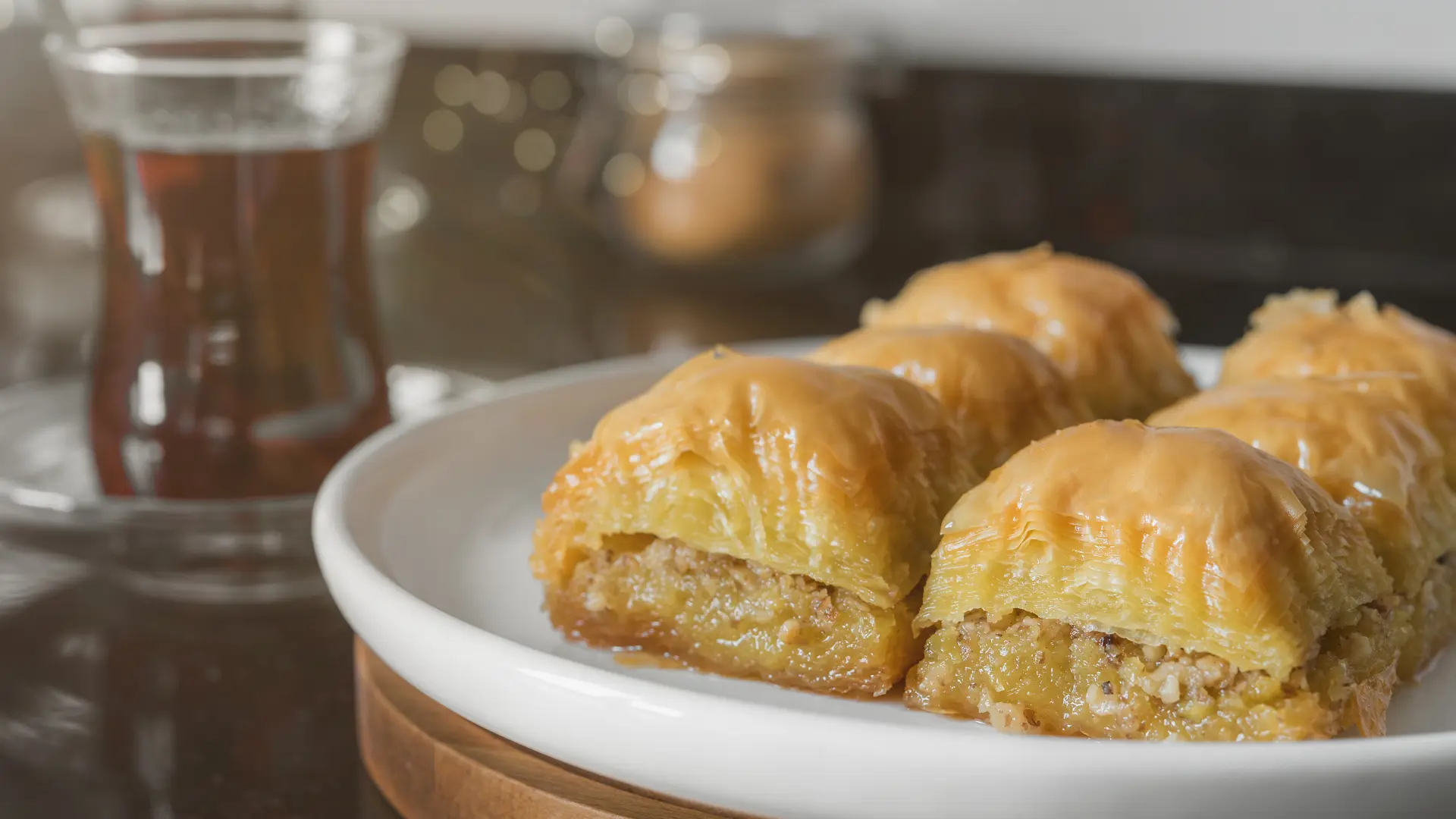
Tea in Turkey is often accompanied by a variety of sweets and pastries, enhancing the overall experience. One of the most popular accompaniments is “lokum,” also known as Turkish delight.
These bite-sized confections come in an array of flavors and textures, from rosewater and lemon to pistachio and hazelnut. The soft, chewy texture of lokum provides a delightful contrast to the robust flavor of Turkish tea.
Another common accompaniment is “baklava,” a rich, sweet pastry made of layers of filo dough, filled with chopped nuts, and sweetened with syrup or honey. The sweetness of baklava complements the strong, slightly bitter taste of black tea, creating a perfect harmony of flavors.
Other traditional sweets include “kurabiye” (Turkish cookies), “şekerpare” (syrup-soaked semolina cookies), and “revani” (a semolina cake soaked in syrup). These treats are often enjoyed during social gatherings, celebrations, and holidays, adding to the festive atmosphere.
Conclusion
Turkish tea is much more than a simple drink—it’s a reflection of Turkey’s rich cultural heritage and social traditions. From the bustling tea houses in Istanbul to the serene tea gardens of the Black Sea coast, tea is an integral part of Turkish life.
The process of making and serving tea, the unique utensils used, and the communal experience of enjoying tea with friends and family all contribute to the enduring legacy of Turkish tea culture.
In every sip of Turkish tea, one can taste the history, hospitality, and heart of Turkey. It is a tradition that continues to thrive, connecting people across generations and offering a warm welcome to all who partake in its rituals.

Tom, Lead Clinic
Researcher and Writer
My Final Tips
Tip 1: Skip the tourist traps and explore the hidden alleys near the Grand Bazaar for an authentic taste of Istanbul. Local-approved joints hide secret kebab variations and traditional bakeries with Baklava recipes passed down through generations, like the iconic Karaköy Güllüoğlu.
Pro Move: Chat up the locals for their favorite spots. Discover the city’s culinary gems off the beaten path and savor flavors that escape the mainstream radar. Happy hunting!
Tip 2: As you may already be aware, Istanbul is renowned as the capital of hair transplantations. For over a decade, I have been crafting guides specifically catered to medical tourists embarking on their journey to Turkey.
I take great pleasure in offering assistance and addressing any inquiries you may have, ensuring that you discover the optimal hair transplant Turkey package. Please feel free to reach out to me!

